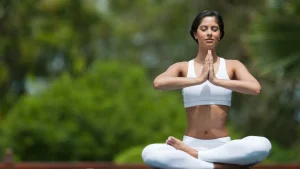Yoga sequencing is the foundation of a meaningful yoga practice. It goes beyond just arranging poses; it’s about creating a flow that supports the physical, mental, and emotional growth of your students. Whether you’re a new yoga teacher or an experienced one, understanding the art of yoga sequencing can transform your teaching. Let’s explore the essence of yoga sequencing, its importance, and practical tips for crafting impactful classes.
What Is Yoga Sequencing?
Yoga sequencing is the process of arranging asanas (poses) in a logical and progressive order to guide students through a balanced practice. Think of it as designing a journey: each pose prepares the body and mind for the next, ensuring a seamless experience.
A well-designed yoga sequence helps students:
- Build strength and flexibility.
- Experience deeper, more conscious breathing.
- Feel grounded, clear, and calm by the end of the session.
Why Yoga Sequencing Matters for Yoga Teachers?
or yoga teachers, sequencing is a crucial skill that enhances your ability to create transformative classes. It helps you:
- Engage your students: A thoughtfully planned sequence keeps classes dynamic and interesting.
- Support student growth: Well-structured classes ensure safety while encouraging progress.
- Deepen the practice: Sequencing connects physical poses to the mental and spiritual aspects of yoga, moving beyond asanas alone.
If you’re looking to strengthen your teaching skills and grow as a yoga teacher, consider enrolling in our Yoga Teacher Training Course (YTTC). This program not only teaches sequencing but also offers a deep dive into the philosophy, anatomy, and art of yoga teaching.
Practical Tips for Yoga Teachers
Whether you’re just starting or have years of experience, these tips can help you refine your sequencing skills:
For New Yoga Teachers
- Start simple: Stick to a few reliable sequences and repeat them for several months. Consistency allows you to focus on improving other aspects of your teaching, such as:
- Organizing your classes.
- Communicating effectively.
- Interacting with students and adapting to their needs.
- Stay adaptable: Be ready to modify sequences based on your students’ levels and energy on a given day.
For Experienced Yoga Teachers
- Explore new ideas: Challenge yourself with creative sequencing strategies that cater to diverse student needs.
- Focus on themes: Introduce themed classes to add depth and make each session unique.
Types of Yoga Sequencing
Here are three key types of yoga sequencing every teacher should know:
1. Peak Pose Sequencing
This involves designing a sequence around a specific, often challenging, pose. Each preparatory pose helps students build the strength and flexibility needed to achieve the peak pose.
Examples:
- Standing: Bird of Paradise, Dancer’s Pose (Natarajasana).
- Seated: Compass Pose, Firefly Pose.
- Supine: Wheel Pose, Shoulder Stand.
Pros:
- Encourages student growth and mastery.
- Builds excitement and engagement.
Cons:
- Can be too challenging for some students.
Tip: Always offer modifications to make peak poses accessible.
2. Themed Sequencing
In themed sequences, a central intention guides the practice. Themes can focus on physical goals, mental clarity, or spiritual growth.
Examples:
- Physical: Yoga for Posture Improvement.
- Mental: Grounding and Focus.
- Spiritual: The Art of Presence.
Pros:
- Adds depth and meaning to the practice.
- Keeps students engaged.
Tip: Start with simple physical themes before venturing into more abstract ideas.
3. General Sequencing
A general sequence offers a well-rounded class suitable for all levels. These are great for beginners or morning sessions and include poses for strength, flexibility, and relaxation.
Benefits:
- Provides a complete practice.
- Suitable for any level or energy state.
Tip: Ensure your sequence covers the six fundamental movements of the spine—forward bend, backbend, lateral bend, twist, extension, and rotation.
Conclusion: Mastering Yoga Sequencing
Effective yoga sequencing is an art that evolves with practice. By experimenting with different styles—whether it’s peak pose, themed, or general sequencing—you can keep your classes fresh and impactful.
Are you ready to take your teaching to the next level? Enroll in our Yoga Teacher Training Course (YTTC) today! Learn the principles of yoga sequencing, deepen your knowledge, and grow as a yoga teacher. Join us to embark on this transformative journey and inspire your students like never before!






